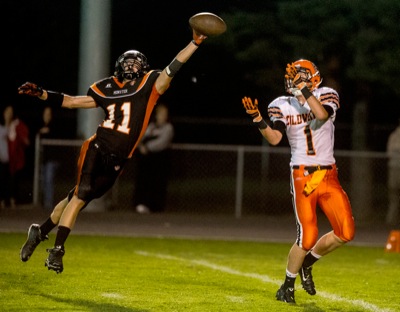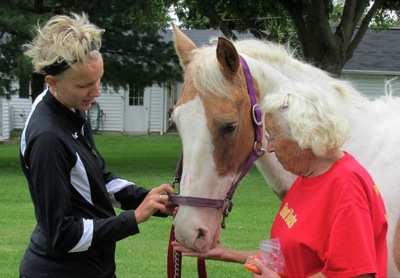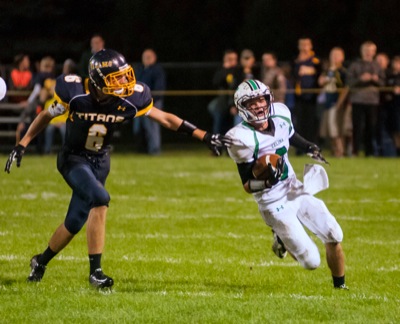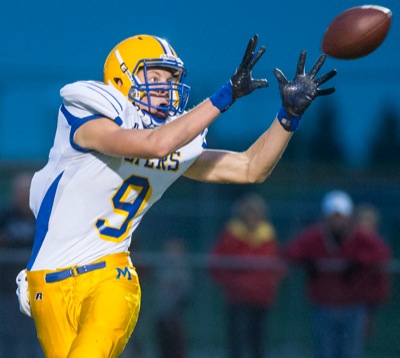Saturday, September 13th, 2014
Carthagena students to share history lesson
Former pupils to gather for reunion
By Margie Wuebker

Submitted Photo
Two buildings separated by a coal shed served as Carthagena School until the summer of 1961. The brick structure, at left, dates back to 1892. The white-frame building was moved in 1936 to property at the corner of Carthagena and Philothea roads. Both were taken down in 1974. Former students are planning a Sept. 21 reunion.
CARTHAGENA - The buildings have been gone for decades but memories remain in the hearts and minds of former Carthagena School students.
Stories of the days spent learning and the friendships gained will be shared noon-6 p.m. Sept. 21 during the school's first-ever reunion at the Carthagena Park shelter house.
Conversations about the "good old days" eventually led to the formation of a committee to organize the event.
"We feel the time spent at Carthagena School holds some very special and precious memories that have lived on within us," committee member Sue Gerlach Giesige said.
The former school at the intersection of Carthagena and Philothea roads consisted of two buildings - a one-room brick structure built in 1892 and used for older students, and a white frame structure formerly known as the Franzer-Uppenkamp School that was moved to the site in the summer of 1936.
"I walked to school from our farm on Kremer-Hoying Road back in the days when U.S. 127 was still a mud road," 98-year-old Herman Hoying of St. Henry said. "We climbed through a hole in a farm fence to shorten the 2-mile distance."
Hoying attended grades one through eight at the school, as did many of his 14 children. He also served on the board of education with Leo Hess, Jerome Hess, Leander Franzer and Clarence Gerlach, he said.
At 91, Sister Anna Kessen vividly recalls teacher Louis Huelsman Sr. instructing all eight grades under one roof.
"He was an excellent teacher ... he had to be to survive," said Kessen, a retired teacher who lives at the Sisters of St. Joseph Home in Clarence, N.Y. "There were upwards of 70 students, as I recall."
Huelsman received assistance from selected seventh- and eighth-graders such as Kessen, who helped younger students with reading and spelling.
"I remember taking second-graders to the back of the room for reading," she said. "Someone else worked on spelling in another corner while Mr. Huelsman tended to other lessons in front."
He also arranged a seating plan that put good students in the back and those with problems learning or behaving in the front.
"I sat with Clyde Jennings and we were in the middle of the room," Hoying admitted with a smile. "I guess that meant we were neither one nor the other."
In addition to reading, writing, arithmetic and spelling, the curriculum included history, geography and a little science. Students often covered the first half of a textbook one year and the remainder the next.
"Mr. Huelsman did more than teach," Hoying said. "He frequently played ball with us and he was pretty good as I recall."
Bernadette Moeder taught grades 1-4 in the Franzer-Uppenkamp School.
School days began with morning Mass at nearby St. Aloysius Catholic Church, where Huelsman served as organist and sacristan. Afterward, he and the students walked a half mile to class.
"There were hooks to hang your coat and shelves on which to place your lunch," Kessen said. "Everybody kept a cup on the back window sill for drinking water from the outside pump."
Committee member Bill Evers said students in his era still brought lunch from home but had a choice of white or chocolate milk in bottles.
"Everybody reached for chocolate first because white stayed around longer and there was a chance of it being sour," he explained.
The school buildings had electricity but no running water or indoor bathrooms. A coal-fired furnace provided heat but former students said temperatures fluctuated, especially when the brick schoolhouse was divided into two classrooms.
"You either roasted or you froze," Giesige said.
Girls and boys spent morning and afternoon recess playing softball in a large yard with several diamonds. Younger children took turns on the swings and in later years a merry-go-round, according to Giesige.
Judy Stemley, Hoying's daughter, said co-ed baseball teams debuted during her days at Carthagena. She also recalled games of cops and robbers with boys chasing squealing girls through the yard. Another popular pastime was "Anthony Over," a game that involved throwing a ball over the coal shed between the two buildings.
Hoying said it was not uncommon for students to remain in the eighth-grade for two years until they were old enough to quit school and work on the family farm. Those who wanted to continue with high school went to public schools in St. Henry or Coldwater. The Carthagena school board purchased a Model T bus in 1940 to provide transportation.
In December 1959, the rural district consolidated with the St. Henry school district. The three Carthagena classrooms remained in use until the summer of 1961.
In accordance with the original 1892 land purchase agreement, ownership of the old school reverted to the church. The congregation paid the same $50 purchase price plus $225 for appraised improvements, according to research by Joyce Alig, president of the Mercer County Historical Society.
For a while, the buildings were used for religious education classes and social functions. Hoying's wife, Merilda, recalled attending a church card party in the building and Stemley remembered going to parties with friends and siblings.
Robert Lauber in 1974 purchased the property from the Archdiocese of Cincinnati and began dismantling the buildings, beginning with the coal shed and outhouses. He saved the brick building for last, pulling down the thick walls with a 1949 John Deere B tractor.
Lauber spent weeks sitting on the pile and knocking mortar from the bricks to use on the exterior of the ranch-style home he later built.
"The school is gone but our memories remain," Giesige said. "We're hoping former students come to the reunion and share stories we may have forgotten."
Reunion information:
• Mass is 8 a.m., Sept. 21 at St. Aloysius Catholic Church, Carthagena, for living and deceased alumni of Carthagena School and members of the parish.
• Reunion begins at noon with a blessing at the Carthagena Park shelter house.
• Dinner is 12:30 p.m. for those making prior reservations with Larry Balster or Mary Kessen. A donation will be taken to defray the cost.
• The Rev. David Hoying will present a history of Carthagena at 2 p.m. No reservations are needed for the program.
• The event ends at 6 p.m.
• Those attending are asked to share written memories of their school days at Carthagena by depositing them in a collection box at the shelter house. People are encouraged to bring yearbooks or material pertaining to the school.
• In addition to Balster and Kessen, other committee members include Jane Kessen Feltz, Mike Franzer, Bill Evers and Sue Gerlach Giesige.
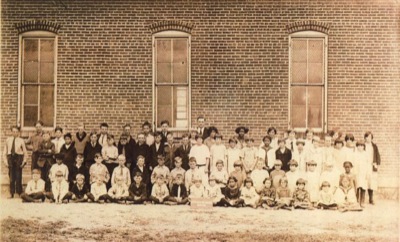
Submitted Photo
Students from the 1920s era pose for a photograph with teacher Louis Huelsman Sr., who was responsible for teaching grades 1-8 in a one-room, brick schoolhouse before another building was moved to the location.

